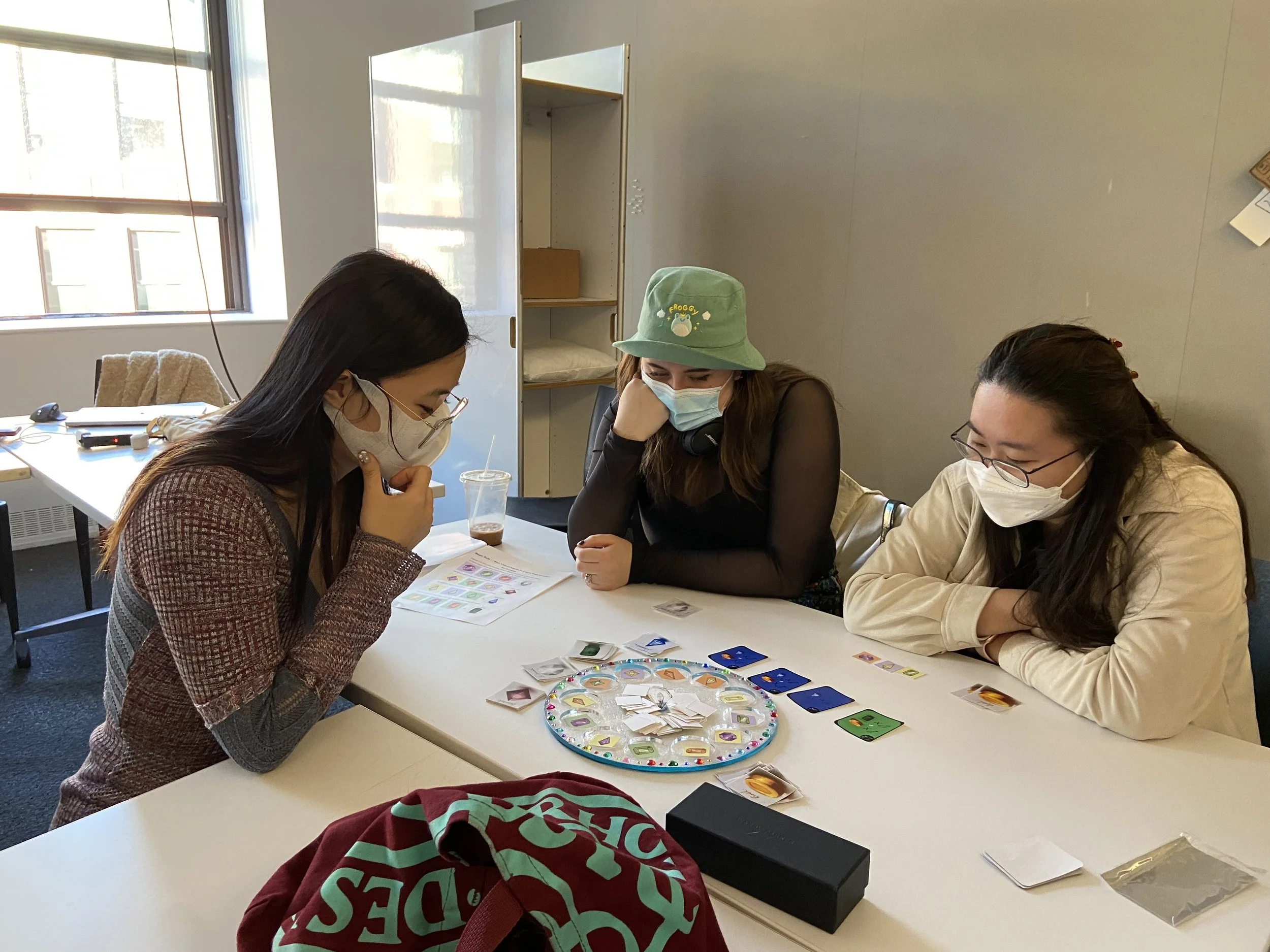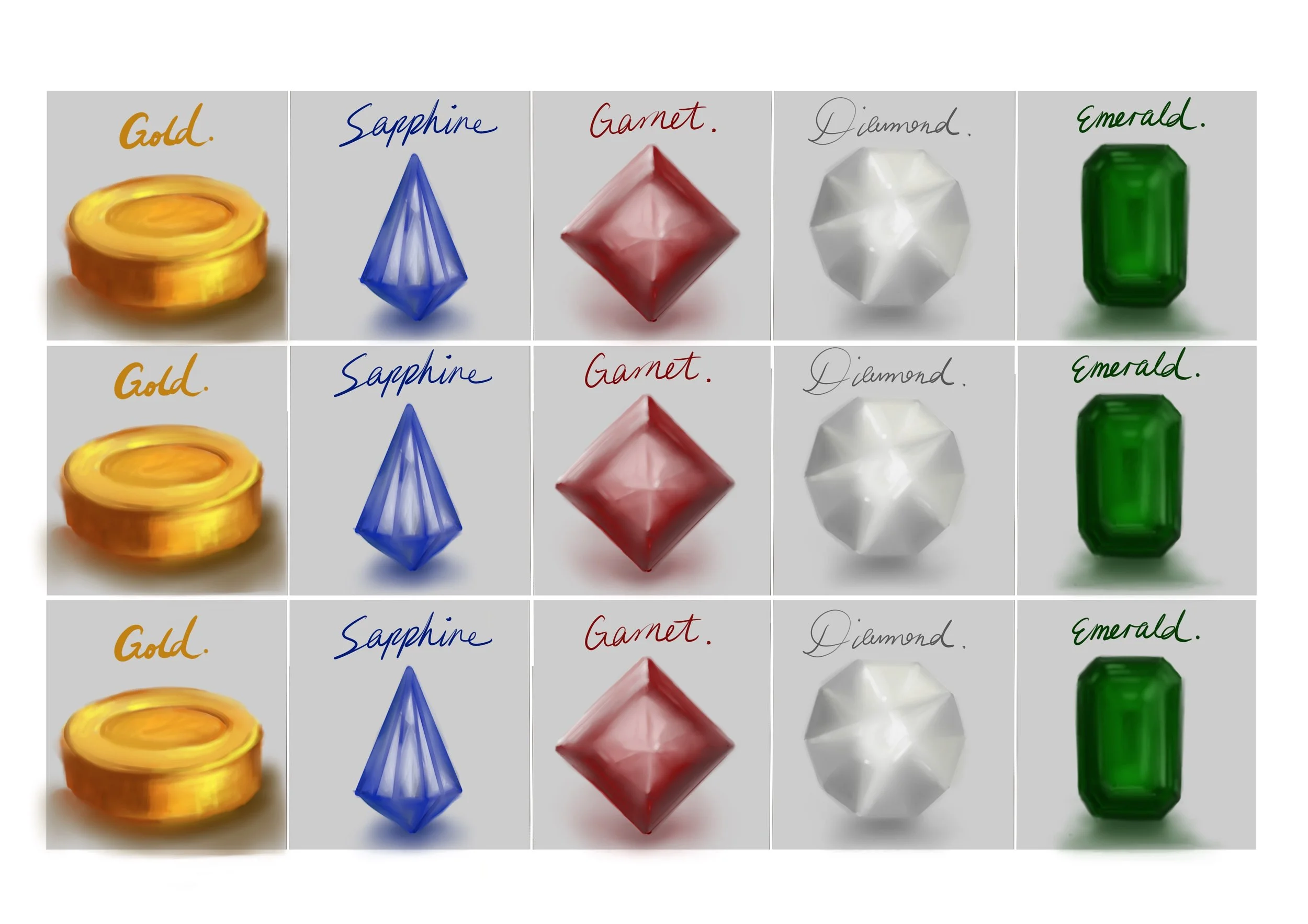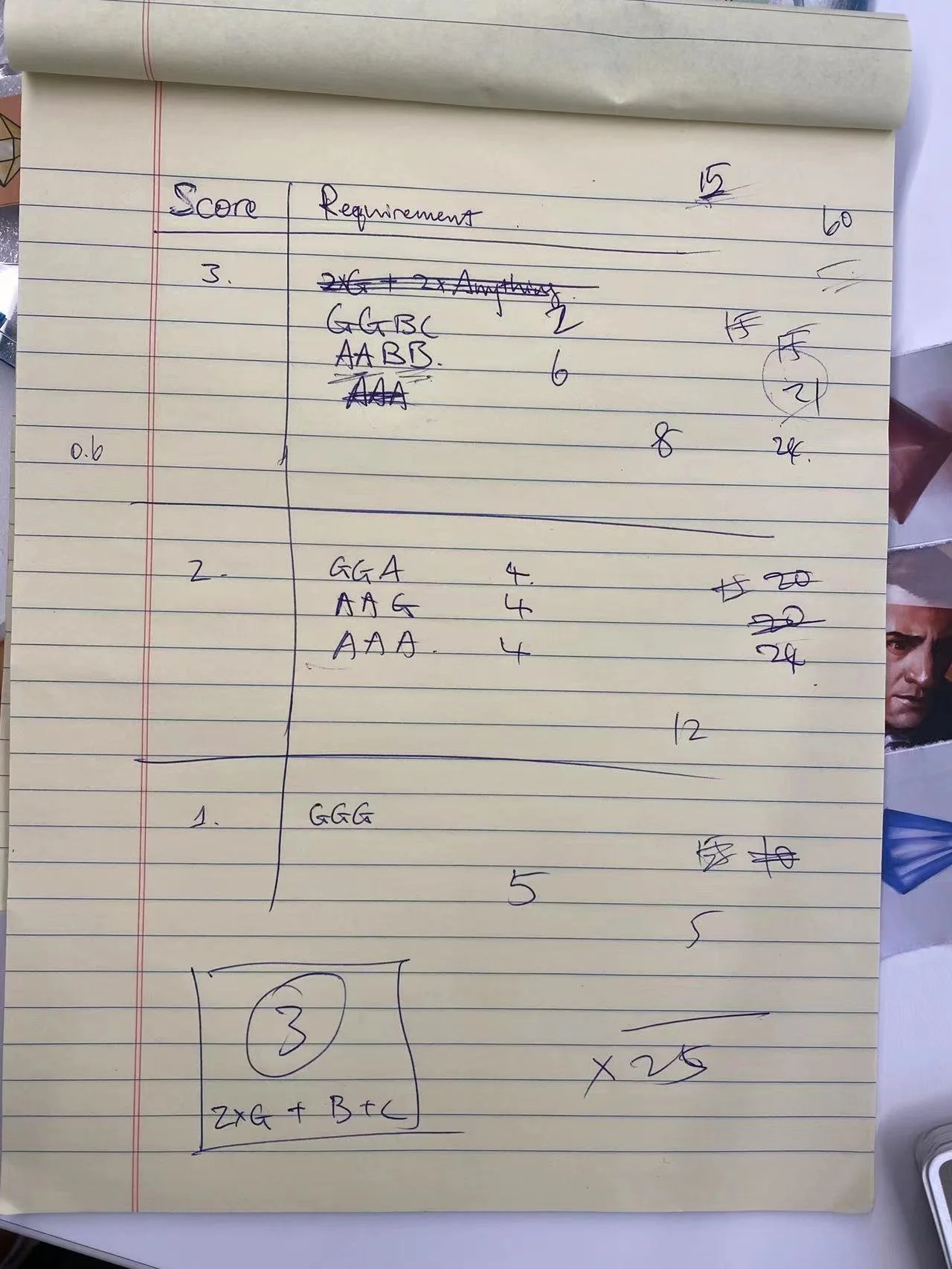Gem Hunt
Turn-based multiplayer tabletop game inspired by the classic “Set”
Team Size: 4
Design Value:
In this modification of Gem Hunt, we made changes to the pace of the game from simultaneous play to turn-based play; we changed the economics of the game by granting players tokens for getting a set and cards that contain victory points that can be exchanged with tokens; we also overhauled the physical components based on our changes and playtests. Here are the design values we had for each changes:
Organized
The intention of creating this modification of our Gem Hunt is to make the game more strategic and forgiving than the original game, because feedback for it was that the simultaneous play was chaotic and punishing for both new and skilled players. By implementing a turn-based gameplay, we allow skilled players adequate time to observe and strategize without worrying about someone else chiming in and new players to also comfortably find a set.
Strategic
As a result of the organized gameplay, Gem Hunt is less punishing yet provides more in-depth mechanics at the same time. Instead of simply “spot a set before anyone else”, The modified game is centered around strategically acquiring specific sets of gems and exchanging them for victory points. In order to maximize the value of each set, the player must observe the quest cards on the board, the sets other players currently have, and the possible combinations in the pool before making their decisions.
Tactility
We redesigned the tokens that come with the set to be based on the 3 gems that made up the set, and the quest cards to be themed based on their values and the gems required to get them. The gems will be laser cut from acrylic, and the cards will be color-printed on cardstock paper. By doing so, we hope to reinforce the positive tactile feelings and gem-themed aesthetics of the original game.
Board Setup
Gems
Quests
Prototype 3: gathering feedback and iterating
After conducting some over-the-shoulder playtesting, we find most participants who played the traditional set before to appreciate our turn-based variation more. For players haven’t played Set before, they find this experience less intimidating when we ask them to compare their play experience with a video of the original play experience. We also received some constructive criticism and suggestions, so we gathered the feedback and analyzed them:
The first problem we have is that we find it difficult for new players to determine what is a set and what is not a set from our written description.
Our test participants also report that having a second layer of “quests” to be less intuitive and sometimes hard to keep track of.
Based on their feedback, we made several adjustments to our game:
Creating an appendix for the rulebook with all variations of “Set Examples”
Replacing the quest system with a point system for each type of set they complete. When they complete a type of set, they get a gem corresponding to the type that is worth more for harder types. The quests are now redeemable with these gems, and accessible to all players.
Unifying the aesthetics of the cards, the gem and the board.
Prototype 1: designing the new system
We started by redesigning the basic rules of the game. In the original “Set” game, the first player that calls out a set gets the point, and three new cards will be put on the board. Depending on each player’s individual skills and prior experience with this type of games, this would easily create a positive reinforcement loop where the player that performs better are more engaged in the game. We found this experience to be intimidating and pressuring for beginners. Another problem with the original game is that in-between each rounds, all cards are exposed to all players. This could lead to another set to be called immediately after the previous one, making strategizing almost impossible.
Our solution to this “speed run” problem is to implement a turn-based system. A turn-based system allows beginners more time to find set patterns without worrying about others calling it out first, making the experience less intimidating. For advanced players, we introduce a “quest” mechanic inspired by Mahjong. At the beginning of the round, each player is assigned a task to find specific combinations that would give them more points upon completion. This allows them strategize, either to quickly fulfill their quest or sabotaging other player’s quest by taking specific gems from the board.
Here is a link to the Rulebook.
Prototype 2: prototyping visuals and playtesting:
For prototype 2, we designed a prototype of the play space, the gems and quest cards. We then printed them on paper for our playtest.







